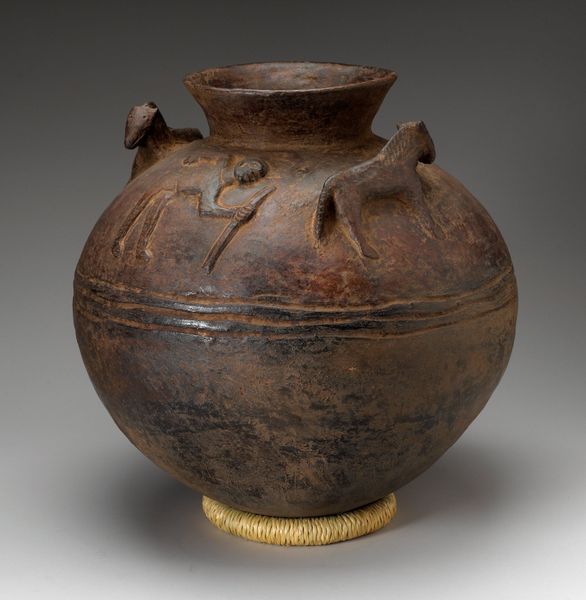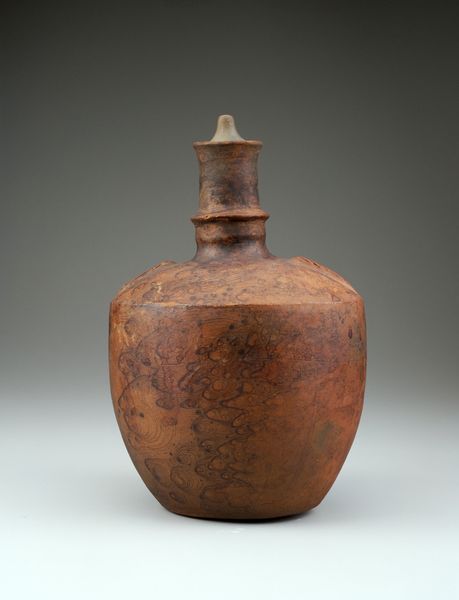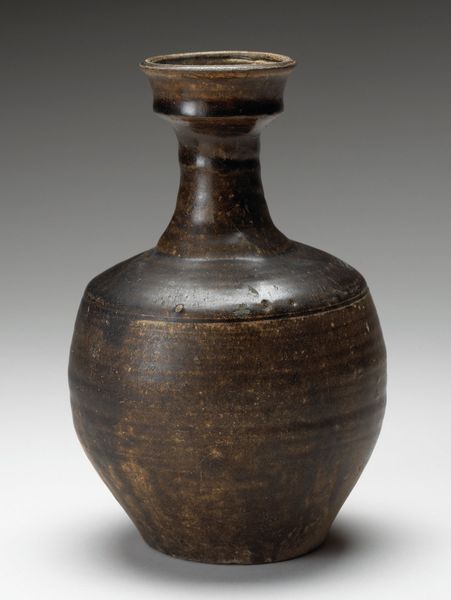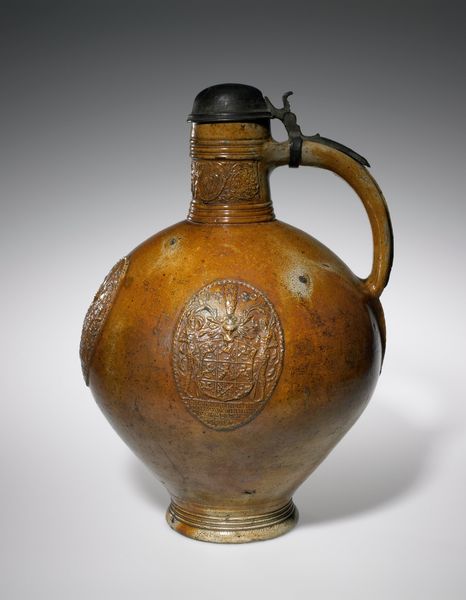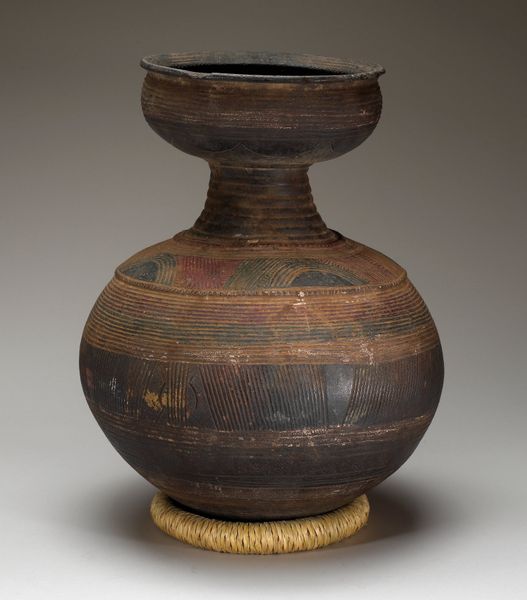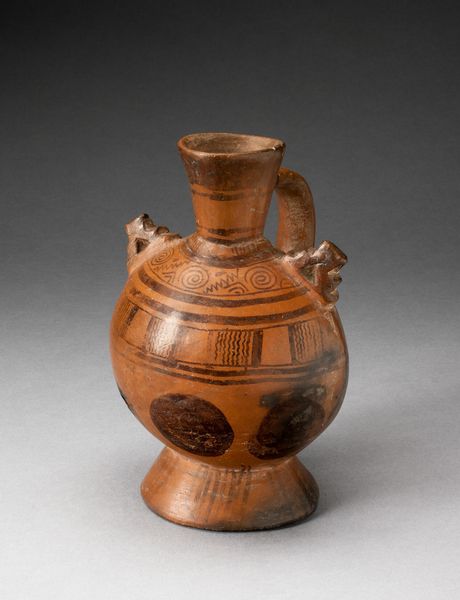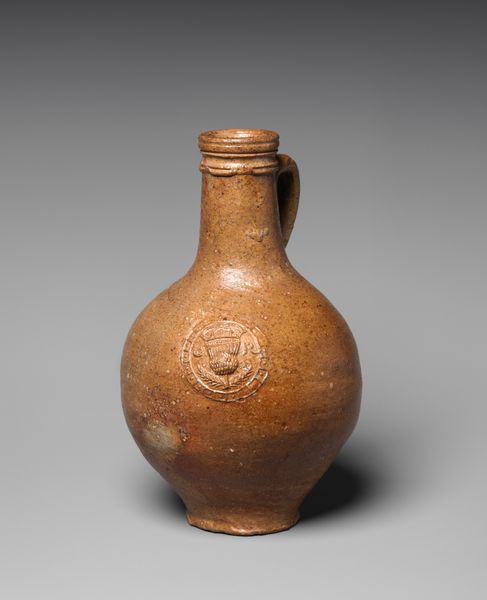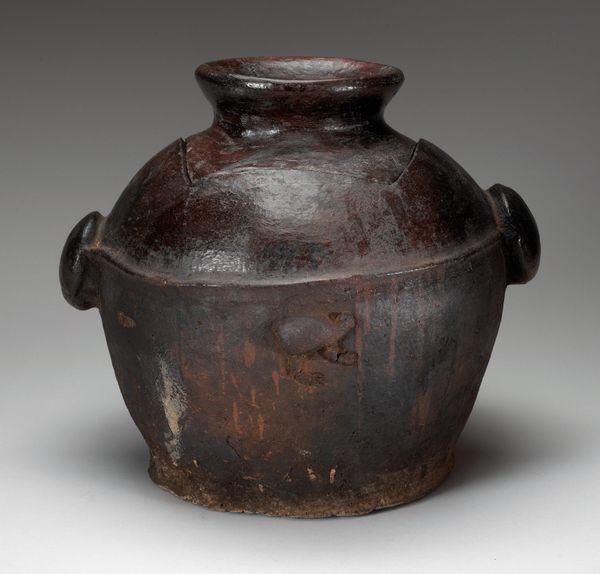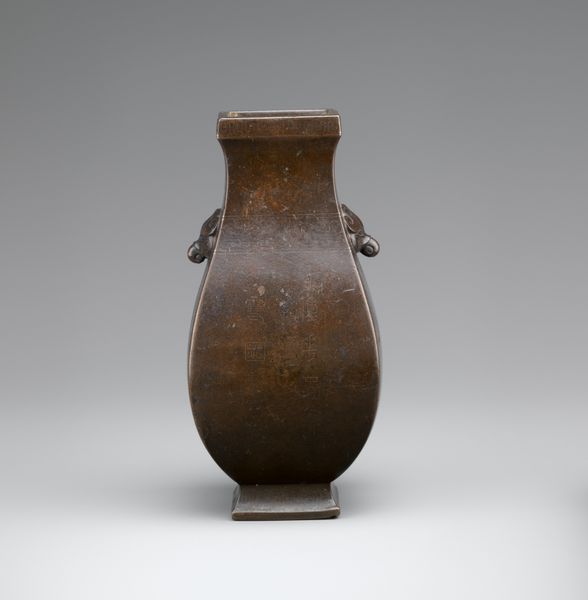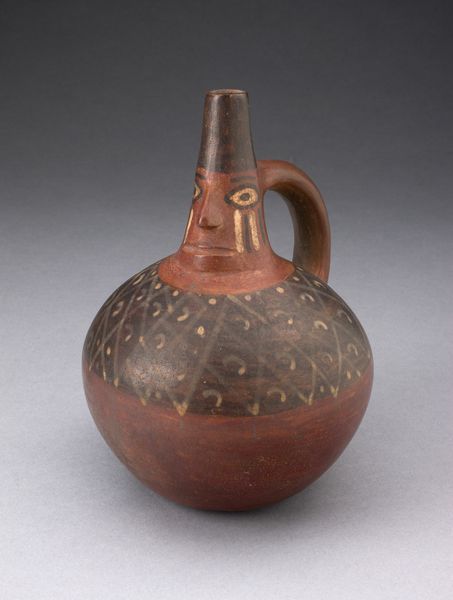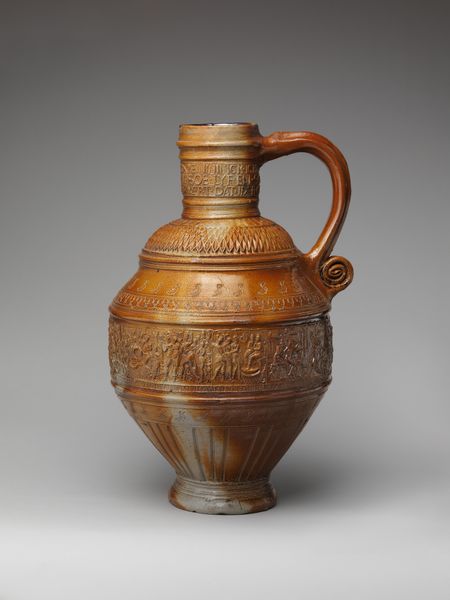
ceramic, earthenware, sculpture, wood
#
sculpture
#
ceramic
#
earthenware
#
stoneware
#
sculpture
#
ceramic
#
wood
#
islamic-art
#
decorative-art
Dimensions: 8 11/16 × 6 × 6 in. (22.07 × 15.24 × 15.24 cm)
Copyright: Public Domain
Curator: This is a piece identified as "Bottle with Stopper," believed to originate around the 20th century. What strikes you about this bottle made with ceramic, earthenware, stoneware and wood? Editor: I find its textures instantly appealing, almost begging to be touched. It whispers stories of functionality infused with ritual, a very satisfying integration. Curator: Indeed. Consider the bottle's function within Islamic art. Vessels like this were crucial for everyday life, and their design, although practical, was also a vehicle for expressing cultural values and identity. The repetition of patterns, do they conjure any imagery? Editor: The geometric patterns etched along its surface remind me of ancient trade routes and mathematical precision—a deliberate and meticulous expression of creativity. The choice of those very warm earthy tones gives a certain timeless quality... but does that play into the design or functionality, do you think? Curator: In design, symmetry and repeated patterns often symbolized order and balance, reflecting a deeper philosophical or spiritual understanding. However, it is also essential to consider it was a water vessel, so it had to be a certain shape and certain materials for storing liquid, meaning functionality definitely informed design decisions. It blends both function and a reflection of the artisan's worldview. The craftsmanship evident in this bottle suggests it wasn't merely a utilitarian object, do you agree? Editor: Absolutely! I love how the rough surface invites interaction, it evokes a feeling of both groundedness and the vastness of its potential journey with its keeper. Almost like a map in plain sight... It whispers ancient secrets through the palm of a hand, or a sip from its mouth. Curator: Ultimately, "Bottle with Stopper" allows us a chance to interpret the relationship between practicality, artistry, and the spiritual in everyday life. The continuity of human experience through objects like this is what fascinates me most. Editor: For me, it's a silent poem on material form and the soul's imprint, echoing with human creativity across cultures.
Comments
minneapolisinstituteofart almost 2 years ago
⋮
This carved wooden bottle and stopper from Somalia with its interlacing geometric patterns is called "weyso" or "quluc". "Weyso" also means “ablution” (ceremonial washing), which is one of the bottle’s functions: to hold the water used to wash the face, hands, and feet before offering prayers to God. The bottle may have also been used by a faith-based healer. After writing Qur’anic verses or religious formulas on a wooden board, the healer washes off the words and signs, and captures the water. This water can be used to heal or protect the believer.
Join the conversation
Join millions of artists and users on Artera today and experience the ultimate creative platform.
